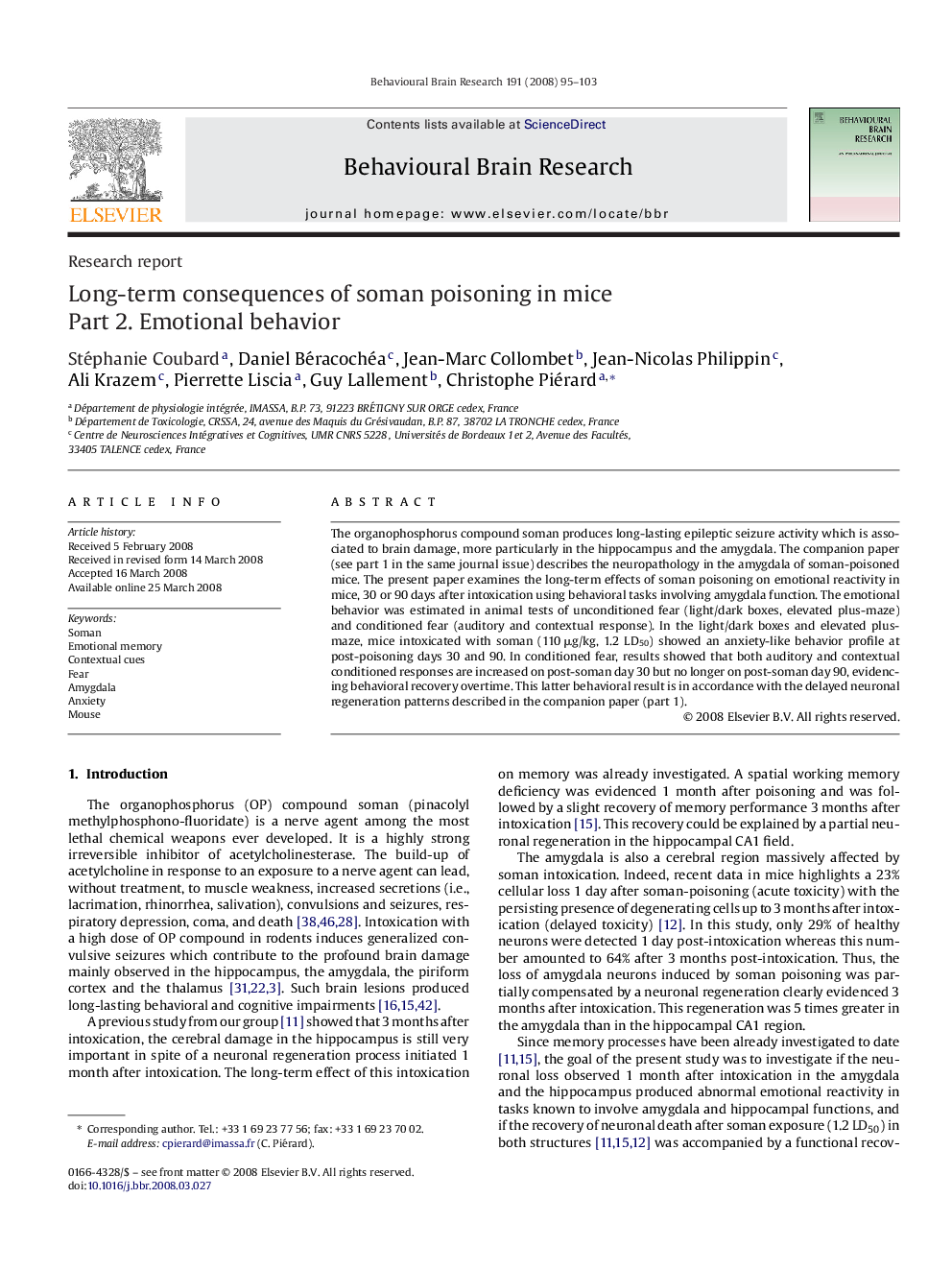| Article ID | Journal | Published Year | Pages | File Type |
|---|---|---|---|---|
| 4315175 | Behavioural Brain Research | 2008 | 9 Pages |
The organophosphorus compound soman produces long-lasting epileptic seizure activity which is associated to brain damage, more particularly in the hippocampus and the amygdala. The companion paper (see part 1 in the same journal issue) describes the neuropathology in the amygdala of soman-poisoned mice. The present paper examines the long-term effects of soman poisoning on emotional reactivity in mice, 30 or 90 days after intoxication using behavioral tasks involving amygdala function. The emotional behavior was estimated in animal tests of unconditioned fear (light/dark boxes, elevated plus-maze) and conditioned fear (auditory and contextual response). In the light/dark boxes and elevated plus-maze, mice intoxicated with soman (110 μg/kg, 1.2 LD50) showed an anxiety-like behavior profile at post-poisoning days 30 and 90. In conditioned fear, results showed that both auditory and contextual conditioned responses are increased on post-soman day 30 but no longer on post-soman day 90, evidencing behavioral recovery overtime. This latter behavioral result is in accordance with the delayed neuronal regeneration patterns described in the companion paper (part 1).
